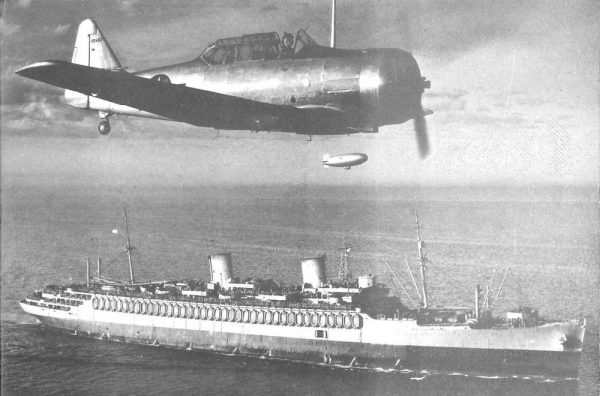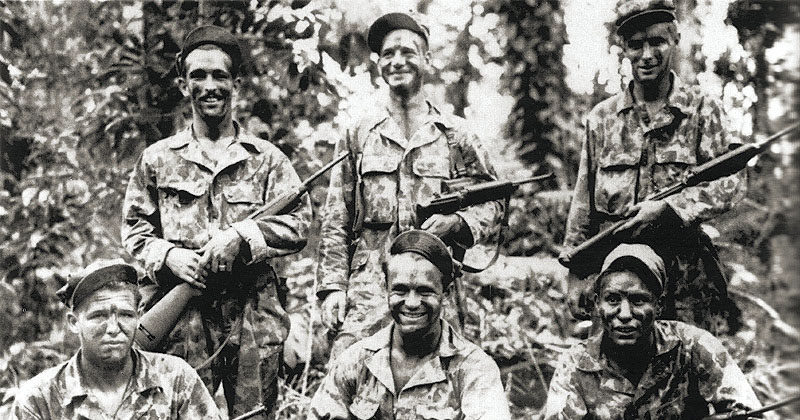January 30 in U.S. military history
1862: The U.S. Navy’s first ironclad ship, USS Monitor, is launched at Greenpoint, N.Y. Designed by Swedish engineer John Ericsson, the turreted gunship will make history in March when she trades shots with the Confederate ironclad Virginia (a vessel built from the previously scuttled USS Merrimac) in a duel that ends with a draw at Hampton Roads, Virginia.
1942: A formation of over 50 Japanese bombers target Singapore harbor — unprotected by either fighters or anti-aircraft guns. Among the enemy bombardiers’ targets is USS Wakefield, a former luxury ocean liner, until her conversion to a troop transport in 1941. Wakefield had just disembarked 20,000 British troops, destined to surrender in just two weeks when Singapore falls to the Japanese.
Five Coast Guardsmen perish during the attack — the service’s first casualties of World War II. After some quick repairs, Wakefield loads about 500 women and children fleeing the Japanese and carries them to Sri Lanka.

That same day, half a world away, the Treasury-class Coast Guard cutter USCGC Alexander Hamilton capsizes off the coast of Iceland after being torpedoed by the German submarine U-132, becoming the Coast Guard’s first vessel lost during World War II. The torpedo blast and sinking takes 26 guardsmen to the bottom.
1944: Just after midnight, two battalions of Col. William O. Darby’s Rangers march to the Italian town of Cisterna, charged with sneaking behind enemy lines to seize and hold the town until the main assault force can wipe out the Germans. Planners are unaware, however, that the two battalions of elite soldiers will be going up against several fortified divisions of enemy infantry and armor.
The Rangers fight valiantly, but are cut down nearly to the last man by overwhelming numbers of well-prepared Germans. Of the nearly 800 men of the 1st and 3rd Ranger Battalions, all but six are killed or captured in the Battle of Cisterna.
1945: Dozens of miles behind Japanese lines, a P-61 Black Widow night fighter flies overhead, distracting enemy troops while 133 soldiers of the 6th Ranger Battalion and Alamo Scouts (featured image), along with over 200 Filipino guerrillas, crawl up to conduct a surprise attack on the Cabanatuan prison camp. Once the men were in position, they ambushed the guards, knocking out the camp’s defenses within a few seconds.
As the soldiers evacuate the 500 Allied prisoners, the guerrillas hold off Japanese reinforcements attempting to cross the Cabu River. The raid is an astonishing success: between 500-1,000 Japanese troops are killed, four tanks are destroyed, and the camp is emptied while incurring only a handful of friendly casualties.
In the Baltic Sea, the Soviet submarine S-13 spots massive military transport ship MV Wilhelm Gustloff as it evacuates German sailors, civilians, and wounded soldiers from Eastern Europe. Three torpedoes strike Gustloff in her port side and the ship slips under the frigid waves, taking over 9,000 souls with her to the bottom – the largest loss of life at sea by a single ship in human history.
Incidentally, S-13 will sink another German evacuee-laden vessel 11 days later, claiming another 4,500 lives.
1968: At 2:45 in the morning, a 19-man Viet Cong suicide squad blows a hole in the wall of the U.S. Embassy at Saigon, managing to hold the courtyard for six hours until paratroopers can retake the compound. 10,000 North Vietnamese soldiers take the city of Hue, triggering a grueling house-to-house battle with U.S. and South Vietnamese soldiers. Meanwhile, virtually all of South Vietnam’s major urban areas and bases are under attack.
The Vietnamese Tet Offensive – launched by over 70,000 jointly operating North Vietnamese and Viet Cong forces – has kicked off across South Vietnam. The Communists trade their typical guerilla tactics for a risky, more conventional strategy intended to weaken the government in Saigon and inspire a revolutionary uprising. Militarily speaking, the Communists are shattered, with an estimated 50,000 killed, wounded or captured. But in the United States, the psychological effect of Tet playing out in the media drains the resolve of the American public.

Today’s post is in honor of Sgt. Alejandro Carrillo, who was killed during combat operations on this day in 2007 in Iraq’s Anbar province. The 22-year-old from Los Angeles was on his second deployment to Iraq and was assigned to Combat Logistics Battalion 7, Combat Logistics Regiment 1, 1st Marine Logistics Group, I Marine Expeditionary Force.
